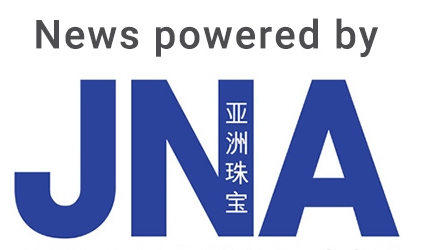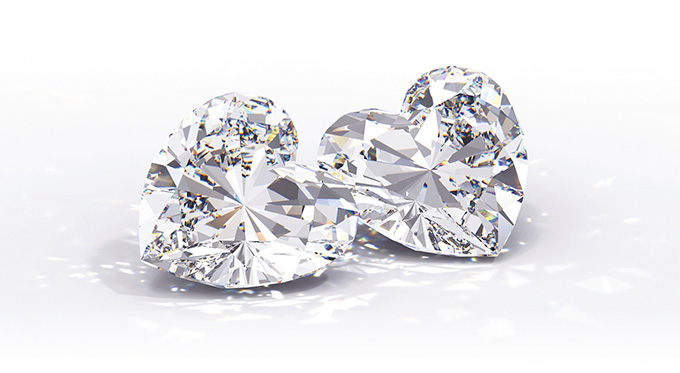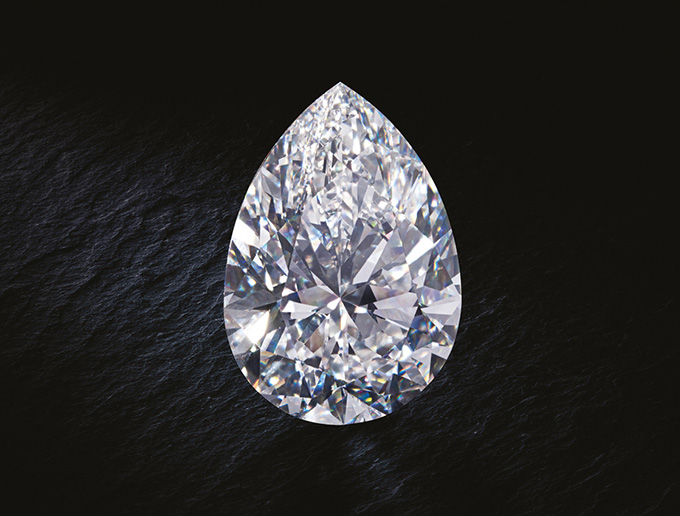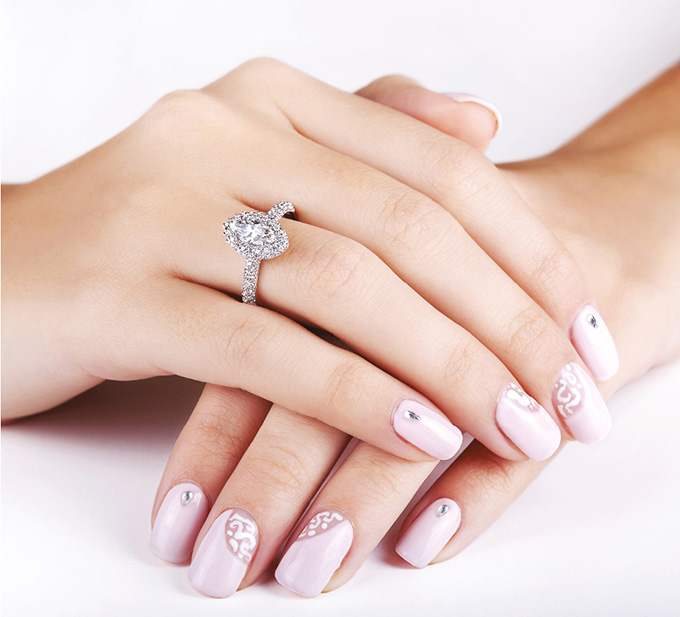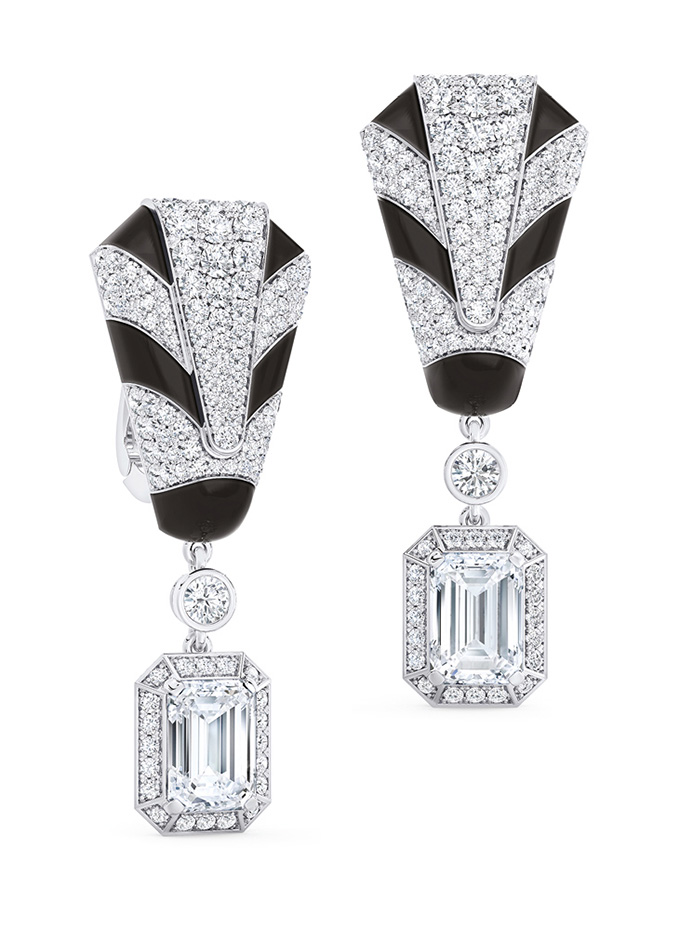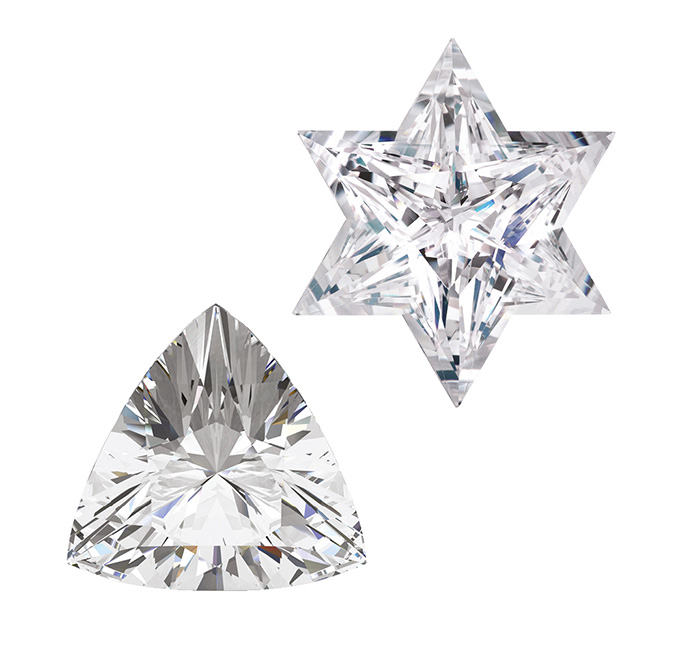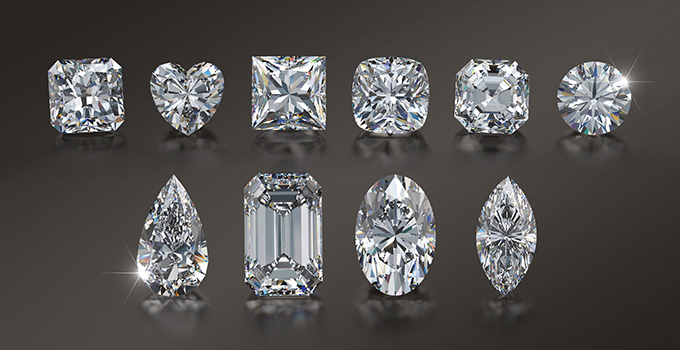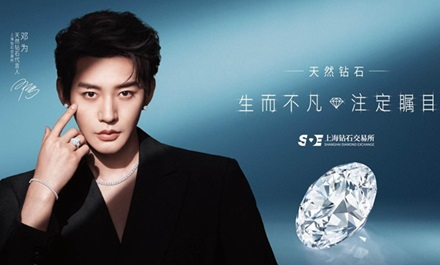Fancy shaped diamonds are all the rage in an industry yearning for a breath of fresh air. While round diamonds continue to enjoy steady demand, market appetite for fancy cuts is gaining ground, fuelled by consumer aspirations for divergence and originality.
This article first appeared in the JNA May/June 2025 issue.
Jewellery circles are abuzz with talk of fancy shaped diamonds steadily gaining favour among today’s buyers. And while market demand for go-to shapes such as pears, emeralds and ovals remains stable, less-mainstream cuts are capturing considerable attention.
In fact, rarity is directly proportional to desirability when it comes to diamond cuts. According to diamond traders, the more special and exceptional the cut, the more popular it is in the market.
Meanwhile, trapezoids, kites and cadillacs, among other more modern shapes, are also catching the fancy of perceptive buyers. While generally conceptualised as side or shoulder stones, there is nothing stopping designers from using these unique stones as innovative centrepieces.
Cementing fancy shaped diamonds’ reputation as ultimate design game changers are renowned jewellers who constantly incorporate fancy cuts in their beloved collections. Jewellery designer to the stars Lorraine Schwartz, for instance, has time and again fascinated high-profile clients with her opulent creations, led by a long list of celebrity engagement rings – from Beyoncé’s emerald-cut diamond to Kate Hudson’s elongated cushion-cut diamond and Heidi Klum’s yellow oval diamond.
This reinforces the pivotal role that influencer and celebrity marketing plays in setting the next important trend, especially among younger generations.
Most recently, the trade witnessed a surge in demand for marquise diamonds. Yoram Dvash, president of the World Federation of Diamond Bourses (WFDB), attributes this to American singer and actress Selena Gomez’s 8-carat marquise diamond engagement ring.
“Selena received her engagement ring and there was a sudden spike in demand for marquise diamonds, which have not been as popular in recent years,” he noted. “We need to focus our messaging on what resonates with young buyers and to invest heavily in expanding our market reach.”
Demand for diversity
Buyers are increasingly on the lookout for variety, hence the stronger demand for fancy shaped diamonds, according to Rishi Mundra, director of Hong Kong-based Stellar Group HK Ltd.
The company, which has been around for 45 years, specialises in rounds and fancy shapes. Its major markets are Hong Kong, Europe and North America as well as the Middle East, which is a growing market for Stellar Group.
“Round diamonds are bread-and-butter goods, but people are looking for new designs and concepts. This is where fancy shapes come into the picture,” explained Mundra. “Pears, marquise and ovals are doing well.”
Kanav Birmiwal of Highend Collections Ltd in Thailand agreed, adding that fancy shapes are enjoying steady demand among a more discerning clientele. Fancy shapes afford customers more liberty and flexibility in designing standout collections, he added.
Among the fastest-moving shapes are hearts alongside kites and triangles since these are quite distinctive. Highend Collections has clients in the US, the Middle East and Asia.
Rajesh Samodia, managing director of Fine Gems Collection GmbH, shared this observation, adding that there is rising interest in even more unusual shapes like moon, hexagon, taper and kite, on top of the perennial favourites.
Fine Gems Collection, based in Germany, mainly sells to jewellery manufacturers and designers in the US and Europe as well as Hong Kong.
“The increase in demand for fancy shaped diamonds was exponential – about 300 per cent from two years ago,” stated Samodia. “Buyers are favouring fancy shapes both as side and centre stones. You can play around with fancy shapes. That is the beauty of it.”
According to Mundra, non-conventional shapes, which are used as shoulder or side stones to accentuate larger centre gems, were not as common about two to three years ago.
“Today, more and more clients are looking for these. We started off with tapered baguettes and trapezoids, but with increased demand, we gradually branched out to half-moons, cadillacs, shields and bullets,” he explained.
As buyers normally require two matching diamonds, a great deal of effort goes into procuring such stones. Prices are on the premium side, too.
In general, fancy shaped diamonds command higher prices compared to their round counterparts. For instance, a GIA-certified 30-pointer SI round diamond could sell for US$850 to US$900 per carat while a similarly sized pear shape can cost a minimum of about US$1,050 to US$1,100 per carat, depending on the make and the fluorescence, noted Mundra.
Ultra unique
Some companies are upping the ante and going beyond the traditional shapes. In Dayagi Diamonds’ display windows are a sparkling assortment of innovative cuts not normally found in the market. A few examples are teddy bear, cloud, dog, rabbit and bat, among other special shapes.
Based in Israel, Dayagi Diamonds has 83 years of experience in diamond manufacturing, with major buyers in the US and, to some extent, Europe and Asia.
CEO and third-generation owner Yoran Dayagi said stepping out of the box stemmed from a desire to resonate with younger generations whose constant exposure to social media heavily influences their buying decisions.
“As a diamond manufacturing company, we took things one step further,” remarked Yoran. “These fun fancy shapes helped us gain popularity on social media, creating a niche.”
Dayagi’s main product line is matching pairs and side stones like trapezoids, trillions, bullets, cadillacs and half-moons, to name a few. Yoran’s father launched a few samples of the more modern shapes, but these only took off with the advent of social media, Instagram in particular.
The company would regularly receive customer feedback and requests, inspiring Yoran and his team to come up with more creative shapes. These currently account for about 10 to 15 per cent of Dayagi’s product portfolio, but it is a growing segment.
“We supply these diamonds to the trade, but we also get enquiries from end-consumers. As such, we recently started a jewellery line. We expect the business to expand even further in the coming years,” noted Yoran.
Grading
Owing to increased demand for fancy cut diamonds, gemmological laboratories are seeing more fancy shaped diamonds being sent to them for testing.
Tom Moses, executive vice president and chief laboratory and research officer at Gemological Institute of America (GIA), said fancy shaped diamonds have a significant appeal for a segment of the market.
Over the past 10 years, fancy shaped diamonds have accounted for less than one-quarter of the diamonds submitted to GIA for grading, he noted, adding that the percentage increased to nearly one-third in 2022 and remained there through 2024.
GIA has recently graded more long-cushion, oval and emerald cuts. Moses noted that advances in computer-aided design have made it easier for jewellery designers to incorporate fancy shapes into their creations, leading to heightened consumer interest and demand
GIA is also working to develop a cut-grading system for fancy shaped diamonds. Moses explained, “The variety of cuts and facet arrangement for different shapes makes this a very interesting challenge. We are applying advanced mathematics and machine learning to this effort.”
In 2022, the International Gemological Institute (IGI) added a cut grade to its reports for loose fancy shaped diamonds to assess the influence of cut quality on light behaviour seen in fancy shapes, in addition to traditional polish and symmetry analysis.
Glittering prospects
Fancy shaped diamonds will continue to captivate buyers moving forward, thanks to their special character and appeal, according to Cihan Akdere, executive marketing manager of Renée Jewellers of Dubai.
“They have more personality, and this is translated to the jewellery piece,” he remarked. “For buyers, this is a huge consideration because they can choose a fancy shaped diamond that strikes a chord with them.”
Founded in 1999, the company has a steady customer base in major diamond jewellery markets across the Middle East and India. Pear, marquise, oval and emerald diamonds are highly sought after at Renée Jewellers, shared Akdere.
“Jewellery is very personal, especially now that buyers are on the lookout for meaningful purchases. We respond to what our customers want and whether the products make them happy. Emotional resonance has become even more important today,” explained Akdere.
Fancy shaped diamonds are here to stay, stated Mundra of Stellar Group. While classic rounds will always have a strong following, a new generation of buyers is increasingly opting for something singular and is setting their sights on fancy shaped diamonds.
“Everything is cyclical though. Princess cuts used to move a lot but lately, baguettes are performing strongly for us,” he stated. “Certain shapes would sometimes take a back seat while others would become more prominent. Bottom line is fancy shaped diamonds is a continuously growing market.”


